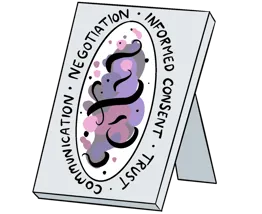Enrol in an online course today for flexible, self-paced learning—no fixed schedule required. Plus, enjoy lifetime access to course materials for convenient revisiting.
Somatic-Based Interventions for Trauma Work

Somatic Psychology emphasises body awareness as an essential part of psychotherapy. This is especially beneficial in the treatment of PTSD when symptoms involve physiological distress, affect dysregulation, or dissociation. Traditional approaches to therapy attend to the cognitive and emotional aspects of clients’ lives, while the somatic experience is often left out of the room. Our bodies need to process stressful and traumatic events through breath and movement. Unfortunately, we are often taught to sit still and override movement impulses. As a result, the biological effects of stressful or traumatic events tend to persist long after events have passed.
Somatic or body-based approaches allow therapists to directly address clients’ dysregulated physiology. As therapists, we nonverbally communicate our willingness to be present with our client’s distress through our own use of breath, movement, body posture, and facial expressions. We offer a physiological ground of safety for another. We prioritise the somatic experience of the client and the nonverbal signals that suggest whether the client is feeling calm or defensively on-guard. In doing so, we have the opportunity to cultivate a refined attunement to the client’s subjective experience moment-by-moment.
From a foundation of relational connection, we can guide clients to notice and be curious about their defensive physiology. Perhaps you invite them to pay attention to their breath or to notice the tension they feel in their body. You can then deepen the process by encouraging clients to become curious about how historical events may be connected to their current feelings. You might offer movement based practices to help them release these layers of protective somatic armouring.
We are wired to respond to cues of threat in our environment, and this occurs without conscious awareness. Dr. Stephen Porges refers to this process as neuroception, which he defines as the innate ability of the nervous system to detect cues of safety, danger, and life-threat. Reacting to threats can lead to a buildup of irritability, restlessness, or anxiety; yet, we might not be aware of the cause of these feelings. Nonetheless, this undercurrent of activation can impact our ability to rest, digest, or sleep.
We can increase our clients’ ability to perceive whether they are in a defensive state of nervous system arousal by inviting them to pay attention to their somatic experience through interoceptive awareness. Interoception refers to the internal sensory awareness of the body that arises as a result of changes in breathing, body temperature, heart rate, or digestive system activity. Interoception arises from sensory receptors located in the muscles and organs of the body such as the heart, stomach, intestines, and bladder. The interoceptive sensory information is then communicated to the brain via the vagus nerve.
Applied polyvagal theory in therapy focuses on guiding clients to recognise and build compassion for their varying nervous system states. The integration of mindful-body awareness allows both the therapist and client to ascertain whether they feel calm, reactively keyed-up, or defensively shut-down. Through this process, the therapist and client develop a shared vocabulary to describe the nervous system states allowing both to observe and talk about changes that occur in the course of a session. We encourage clients to recognise that their defensive states were once necessary to help them survive. Ideally, this helps them befriend their nervous system and cultivate self-compassion. We help them understand that there is no bad or wrong nervous system state. All of our emotions and physiological states are important and convey information about our inner world.
This ground of acceptance can then also allow you and your client to explore therapeutic interventions that facilitate a sense of safety and connection in the here and now. The goal of this work is to help clients develop greater self-organisation so that they can eventually learn to respond to their own varying needs with up-regulating or down-regulating strategies through somatic-based interventions for trauma recovery.
My greatest hope in sharing this somatic approach to trauma treatment in my books and trainings is to help therapists feel empowered and effective in our work with our clients. These skills are especially valuable when addressing preverbal traumas in which clients may not have access to a verbal narrative memory or visual imagery. Nonetheless, these traumatic events often manifest in the form of distressing somatic symptoms. Not only does working somatically support our clients to find optimal wellbeing, but we also practise in a manner that helps us as therapists increase our own self-care during and after sessions. In this manner, we help to reduce the likelihood of vicarious traumatisation and burnout.


















